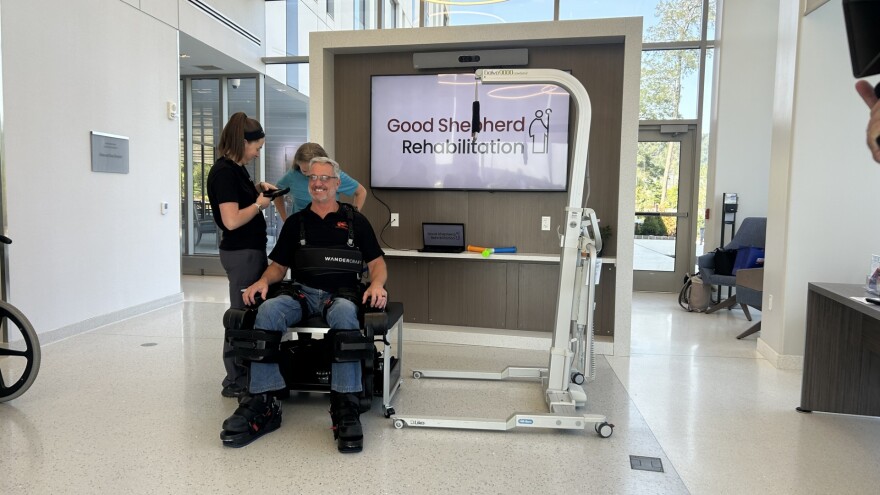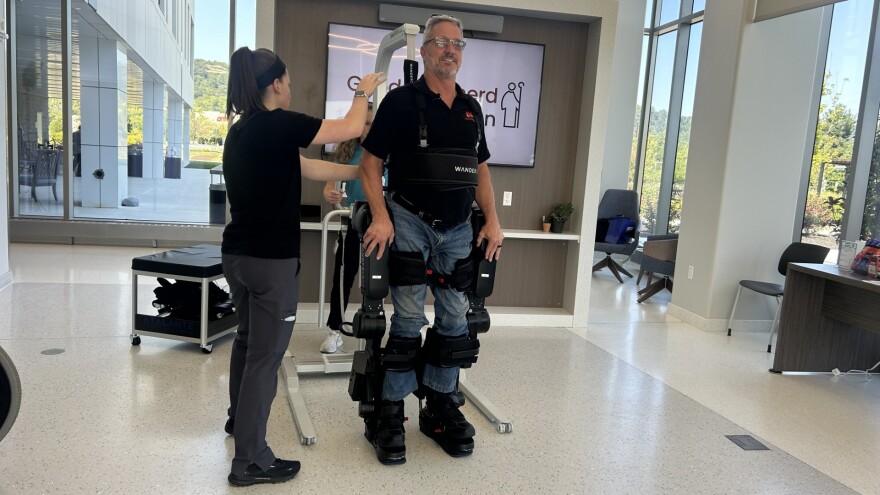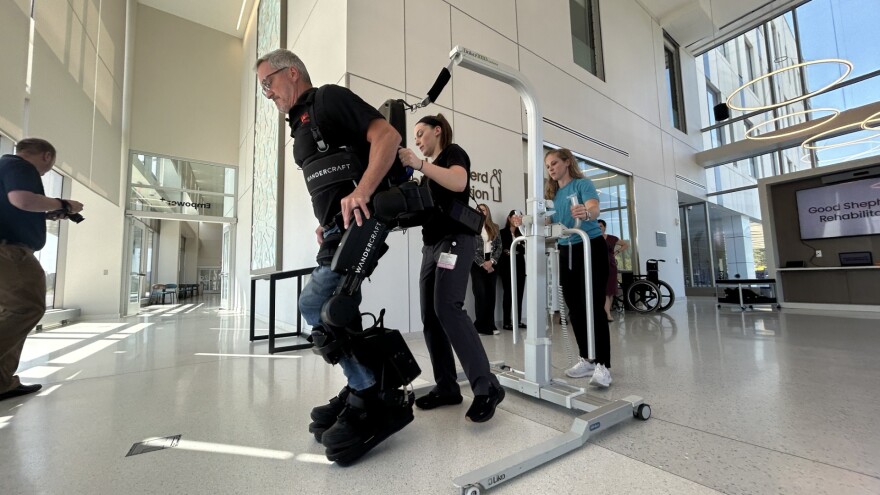CENTER VALLEY, Pa. — The Summer Olympics may be over, but a viral technology that appeared in Paris is now here in the Lehigh Valley.
A local health care provider is the only clinical user of the robotic exoskeleton seen at the Olympic Games in the country.
"This has been in the works well before the Paris Olympics, it just so happened that they were also carrying the torch,” said Emily Lyter with the Good Shepherd Rehabilitation.
She is the administrative director for Good Shepherd Learns, Creates, and Research, a program that provides learning opportunities to clinicians to improve patient care.
2024 para-athlete Kevin Piette used the Wandercraft’s Atalante X to walk while carrying the Olympic torch.
The robotic exoskeleton uses hands-free and self-balancing technology to help people who are mostly immobile to walk. Lyter said it’s designed for people who have had stroke or spinal cord injury, who have leg weakness, and helps them walk and move in an upright position.

"The patient wearing the device can lean forward and when they lean forward the device itself will stand them up, and then they can do different things in that device, like walking, crouching, balancing, whatever the therapist really feels is most important for the patients to meet their goals,” she said.
Patient experience
Allentown resident Kevin Oldt was one of the first patients to use the device in the Lehigh Valley.
"It was like [after] 25 years of being in a wheelchair, I started walking again. That was really cool,” said Oldt, who was paralyzed in 2001 after a snowmobile accident.
"Having equipment like this is amazing because it gives you hope. It puts hope back in you. Gets you up. Gets you walking."Kevin Oldt
"Having equipment like this is amazing because it gives you hope. It puts hope back in you. Gets you up. Gets you walking,” he said. "The machine has been working great for me. I can sidestep, I never sidestepped [since the accident].
"I can make it turn on my own. I can walk without crutches or a walker. I was able to bend over."
Oldt said no training was necessary, as soon as he was strapped into the machine and tethered to the harness, he was off and walking. However, he said the most exciting moment was being able to stand for an embrace with his wife.
"I was able to bend over enough because my wife is a lot smaller than me, I’m six foot one, and hug her,” he said. “It's the first hug I ever gave her in a device. It just felt great. It was really a meaningful thing."
Oldt was able to demonstrate how the technology works Wednesday in Good Shepherd's Empower Plus section of their Center Valley Hospital.
"I feel human. Just the feeling to stand and look someone in the eye, just is a great thing."Kevin Oldt, Allentown
"The experience was tremendous and then made me feel good. Made me feel human again. I feel human. Just the feeling to stand and look someone in the eye, just is a great thing. "
"We are actually the first in the United States to have this technology and using it in a clinical setting and really what that means is using it with our patients, whether they're here in the rehab hospital, or maybe a patient who might be receiving outpatient therapy, typically following something like a spinal cord injury, where they have the ability to begin their walk, but through the use of a robotic or exoskeleton technology," Michael Spigel, president and CEO of Good Shepherd Rehabilitation, said.

Funding through Fleming
He explained that this piece of technology was funded through a grant from the Fleming Foundation.
"We're always searching for, how do we bring the latest technology that we feel truly has benefit for our patients or people who living in the Valley for some sort of disability, and so that's part of the way we view our role is to be bringing things that people can use that would otherwise not be available in the valley," Spigel said.
The exoskeleton will be used for both inpatient and outpatient rehabilitation for the next few months. Then, Spigel said Good Shepherd would decide if another exoskeleton should be purchased for the Network.


